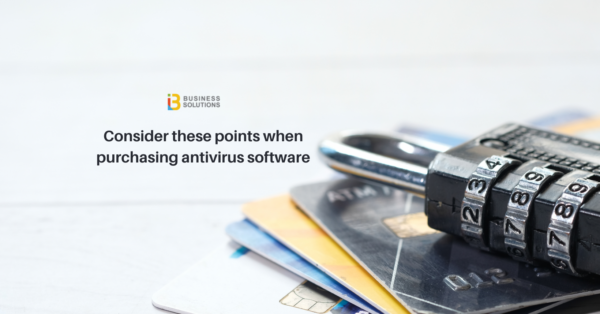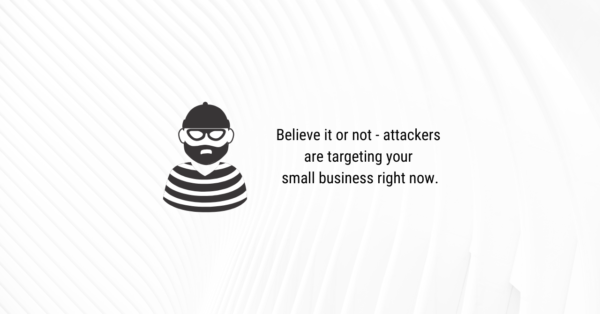Strengthening Business Controls in the Era of Cybersecurity: A Comprehensive Approach
In today's digital landscape, cybersecurity has become a critical concern for businesses of all sizes. The ever-evolving threat landscape poses significant risks to organizations, including financial loss, operational disruption, and reputational damage. As cybercriminals become more sophisticated in their tactics, it is crucial for businesses to implement robust controls to protect their assets. In this blog post, we will delve into the world of cybersecurity technology and discuss the importance of business controls—specifically, physical, financial, and technological controls. Let's explore how organizations can differentiate themselves from the competition, ensure sustainability and profitability, enhance productivity, and effectively manage risks.
Understanding the Significance of Cybersecurity: Cybersecurity encompasses a range of technologies, processes, and practices aimed at managing technology risks. For many organizations, it is viewed as a cost center, much like physical risk or financial risk management. However, the growing number of high-profile breaches affecting both small and large businesses indicates that no organization is safe from cyber threats. Hackers, driven by financial motivations, have shifted their focus to target vulnerable small businesses. This trend has led to a significant increase in ransomware attacks, with small businesses being hit the hardest. Statistics reveal that 46% of small businesses have experienced ransomware attacks, and a staggering 73% have paid the ransom, resulting in an average cost of $200,000 per incident.
The Evolution of Profit-Driven Hacking: The landscape of cybercrime has evolved over time. It started with viruses and malware, then progressed to spam and stealing personal information for online sales. Today, we witness the emergence of new trends, such as hacker-for-hire services and ransomware-as-a-service. These developments have further increased the ease of executing cyber attacks, even for non-technical individuals. In fact, anyone can start a ransomware-as-a-service business by acquiring the necessary tools from the dark web. This accessibility, coupled with the potential for significant financial gains, has made small businesses an attractive target. Cybercriminals now prefer targeting organizations that lack proper protection, as the potential rewards outweigh the risks associated with attacking larger entities.
The Need for Comprehensive Cybersecurity Controls: To mitigate the risks posed by cyber threats, organizations must adopt a comprehensive cybersecurity framework. One such framework is provided by the National Institute of Standards and Technology (NIST). It offers a nationwide public framework built on five core functions: Identify, Protect, Detect, Respond, and Recover. At I3 Business Solutions, we implement this framework through the Center for Internet Security Version 8 controls, comprising 172 line items across 18 cybersecurity control categories and 153 safeguards. While the complexity of these controls may seem overwhelming, they are crucial for safeguarding organizations from various cyber risks.
Understanding Business Controls: Business controls encompass physical, financial, and technological measures aimed at managing risks effectively. In the context of physical controls, organizations can apply concepts similar to securing a house or business premises. This involves implementing measures such as door and window locks, surveillance cameras, and fences to protect the physical assets and infrastructure. Similarly, in the realm of technology, businesses have traditionally relied on firewalls and antivirus software for protection. However, the focus has now shifted towards proactive detection and response capabilities.
Enhancing Financial Controls: Financial controls play a crucial role in mitigating cyber risks. Measures such as debit blocks and positive pay can help prevent unauthorized transactions and detect fraudulent activities. Moreover, two-factor authentication and two-person confirmation processes can provide an additional layer of security for changes related to payroll accounts, checking and routing numbers, and credit card information. These controls ensure that any modifications undergo thorough scrutiny and are not solely reliant on electronic communication.
The Human Factor and Data Responsibility: While technology is a vital component of cybersecurity, it is essential to recognize that humans are often the weakest link. Cybercriminals exploit social engineering techniques to manipulate individuals and gain unauthorized access to sensitive information. Education and training programs aimed at raising awareness about phishing attacks, social engineering, and safe online practices are crucial for strengthening the human firewall. Additionally, implementing password policies, adopting privileged access management, and utilizing multi-factor authentication can significantly enhance data protection efforts.
The Importance of Cybersecurity Insurance: Despite implementing robust controls, organizations must acknowledge that no security system is foolproof. Cybersecurity insurance acts as a safety net, providing financial protection in the event of a breach. It is essential to regularly review insurance coverage to ensure it aligns with the evolving threat landscape and the organization's risk profile. Working with insurance providers who specialize in cybersecurity can help tailor policies to meet specific needs and provide the necessary support in the aftermath of an incident.
In an increasingly digital world, businesses must prioritize cybersecurity to protect their assets, maintain sustainability, and safeguard their reputation. Implementing comprehensive business controls, including physical, financial, and technological measures, is essential for mitigating cyber risks effectively. By embracing a proactive approach and educating employees about potential threats, organizations can enhance their cybersecurity posture. Remember, cybersecurity is not solely the responsibility of the IT team; it is a collective effort that involves every individual within the organization. Together, we can navigate the ever-changing cyber landscape and protect our businesses from potential harm.
Share this
You May Also Like
These Related Stories
-1.jpg)
Securing Small Businesses: The Importance of Cybersecurity

Consider these points when purchasing antivirus software



No Comments Yet
Let us know what you think